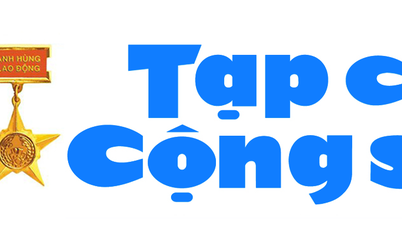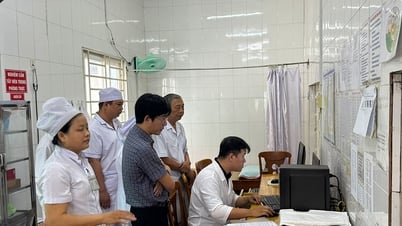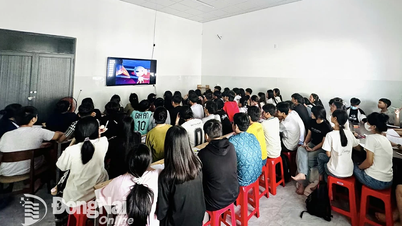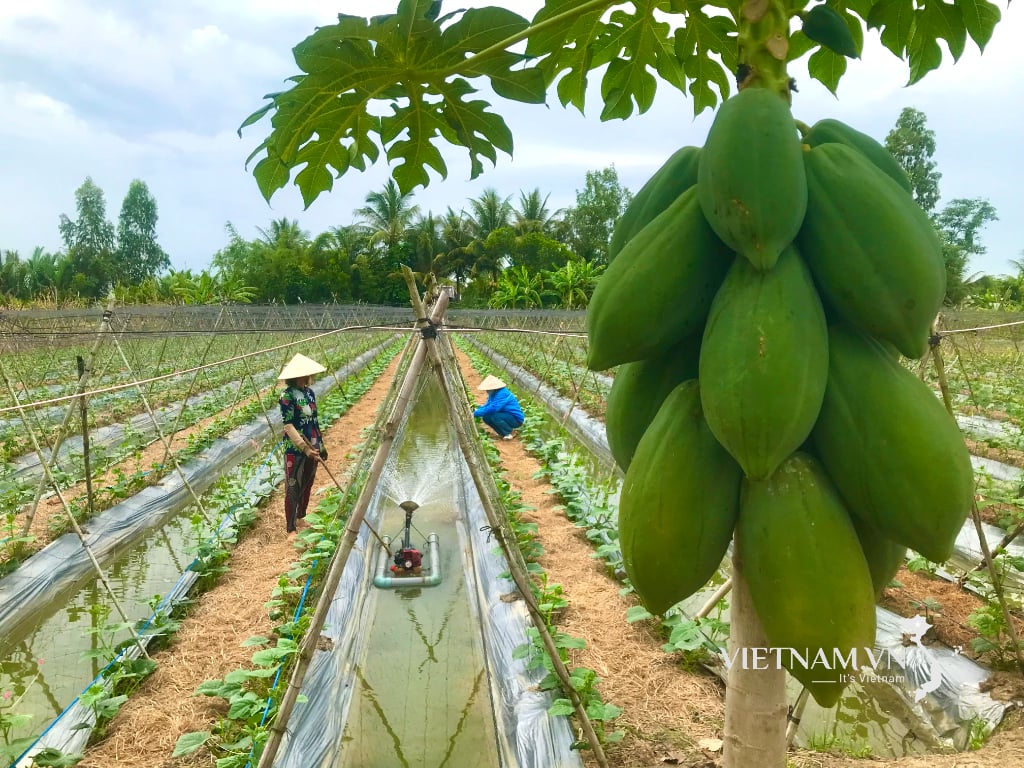Illustration: BH
Stay ahead of technology trends
While in the past, newspapers held a monopoly in providing information, today, social media platforms, mobile applications and digital media channels have become direct competitors, even surpassing them in terms of speed, dissemination and ability to personalize information. The public is increasingly proactive in receiving and even producing information. The traditional one-way communication structure is broken, replaced by a network communication model, where information circulates quickly, non-linearly and multi-dimensionally.
With Big Data, reporters can discover hidden social issues from personal, individual information, seemingly meaningless data lines. With artificial intelligence (AI), newsrooms can effectively apply it in management, production, content distribution and product promotion. Algorithms that automatically search for information, analyze data to detect trends, suggest attractive headlines, and produce audio and video using artificial intelligence are gradually supporting some manual steps in the journalism production process. With virtual reality technology (AR/VR), journalism can "tell stories" with immersive experiences, increasing interactivity and persuasion.
Big trends shaping the future of journalism
First, multi-platform and multimedia journalism is on the rise. Press agencies are no longer simply doing print, visual or audio journalism, but are moving towards a newsroom model that converges with multiple press and social media platforms. A work often integrates text, video, data graphics, sound and interactive effects. Newsrooms organize production according to the “one source - many products” model (one content - multi formats), in which a news story can be produced into an in-depth article for each type of journalism, a short video for TikTok, an infographic for social media, a podcast for Spotify, etc.
Second, data journalism, explanatory journalism and creativity journalism are valued. Through data analysis and visualization, journalism can provide the public with a deeper, more comprehensive and objective view of social, economic and political issues. Modern journalism also aims at a creative role, that is, contributing to promoting positive changes in society. Public interest journalism focuses on essential community issues, from environmental protection, education, health to preventing and combating corruption, social injustice, and value orientation.
Third, content personalization and audience dataization are becoming prominent trends. Today's news organizations do not just stop at mass content production but also take advantage of user behavior data such as access history, reading time, interaction and interests to recommend content suitable for each individual. This helps to prolong the time the public stays on the platforms, increase the level of engagement and improve the reading experience. No longer "one content for all", modern journalism is aiming to become a "companion" that understands the public, thereby opening up great opportunities in creating connection value.
Fourth, enhancing verification and trustworthiness becomes a vital factor. In the context of fake news, disinformation, deepfake and information manipulation phenomena spreading on the internet, mainstream media must become an “institution of verification” where the public can come to distinguish between right and wrong, real and fake. This requires not only a strict content editing process but also professional ethics and high social responsibility of journalists.
Fifth, transforming the economic model of journalism to suit the new context. While traditional advertising revenue is decreasing due to being dominated by platforms such as Google, Facebook, etc., journalism is experimenting with many models: reader fees (paywall), membership journalism, crowdfunding, linking content with e-commerce, etc. However, economic development must still be based on the core foundation of content quality and building trust and real value for the community.
Restructuring the production process of various types of journalism
The current print newspaper production process is no longer manual as before, but has strongly integrated technology: Digital design and layout using specialized software (such as Adobe InDesign), allowing editors to directly manipulate electronic drafts with the ability to tightly control layout, color and images. Editing content in parallel with images and graphics, aiming for the standard of "fast reading - long memory - easy to understand". Automating the printing and distribution stages with high-speed offset printing systems, synchronous packaging and shipping processes helps save time and costs. The biggest challenge for print newspapers is no longer technical, but the ability to adapt to new information consumption habits - fast, short, flexible and interactive.
Electronic newspapers are characterized by continuous production, instant updates, and rapid digital transformation. The production organization process of this type is currently highly comprehensive. In particular, electronic newspapers are convenient for search engine optimization, attractive design, content arrangement suitable for each interface (mobile, desktop), promoting interaction with the public, and integrating social networks in the content distribution strategy.
Radio and television are also not outside the vortex of change in the digital space. From being exclusive and linear channels, television and radio are now being "delinearized" to adapt to on-demand viewing and listening habits. Compact cameras, wireless recording devices, fast editing software (Premiere Pro, Final Cut, CapCut...) allow flexible production, even with small-scale reporter teams. Press agencies are also taking advantage of the podcast format as an intimate, accessible storytelling tool, suitable for young audiences.
With the above trends, the press needs to proactively adapt, innovate thinking, improve digital capacity, restructure the organization, invest in human resources and build a technology strategy to continue to affirm the central role of mass media. Modern journalists must become "multi-skilled journalists" in the digital age, able to write articles, take photos, film, edit, record, make podcasts, use data analysis tools... In the face of the huge flow of data, the press needs to be maintained as a "compass of knowledge", creating public trust with honesty, objectivity, humanity and social responsibility. That is the solid foundation for the press to develop sustainably in the digital age. And to fulfill that mission, the press needs to be viewed as a field that needs to be prioritized for development, training, support seriously and with a long-term vision.
Dr. Le Thu Ha
Academy of Journalism and Communication
Source: https://baothanhhoa.vn/bao-chi-trong-xu-the-thoi-dai-252387.htm



















































































































Comment (0)